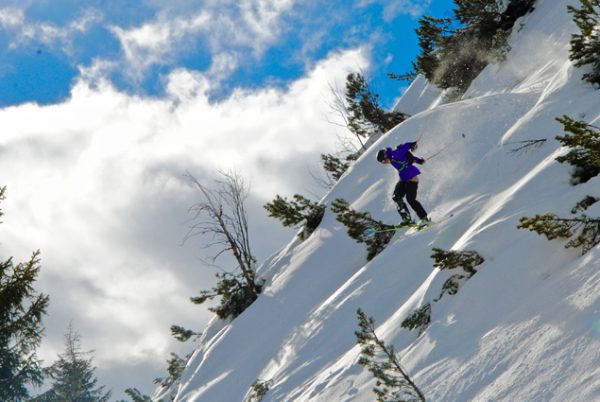Drop in skier density on slopes this winter may tempt some to ski faster than ever

When many Canadians were in full lockdown in early spring, I eerily recall being one of few drivers on downtown Toronto empty streets. As an essential worker, I had to show up to work in the ED, no matter what.
The wide-open city gave people the opportunity to drive much faster and more aggressively than usual. I watched stop signs become “optional” for some drivers and saw some scary speeds in quiet neighbourhoods. I worry that a predicted drop in skier density on the slopes this year may tempt some to ski faster than ever—which could increase the severity of ski injuries.
The classic mechanical physics formula to calculate kinetic energy of a moving object (energy = ½ mass x velocity2) tells us that if you double your speed, an impact will have four times the energy.
In real life conditions, though, the formula above may underestimate the effect of speed on the severity of any injury. This is true for car versus pedestrian injuries. A pedestrian struck by a car travelling at 30 kph has a five per cent chance of dying. When average speeds reach 45 kph, the likelihood of dying jumps to 45 per cent.
Similar data exists for ski injuries and speed. The relationship between speed and injury severity likely explains why expert skiers may have fewer injuries than beginners, but any injuries they do have are much more severe.
Grooming slopes billiard-table smooth has its obvious benefits to our ski-egos, but the detriment not often realized is that our increase in speeds puts the science of physics and helmet manufacturers in opposite corners. In Colorado, an average of 10 skiers die on-piste each year. The majority of the fatalities are expert men in their 30s—on a blue run—who hit a tree while skiing at high speed. Even if you find your favourite run empty of other skiers this special winter, and with so many ways to get thrills in our sport, resist the simple urge to put your foot down on the accelerator.
by Dr. John Foote
Dr. John is an emergency room physician at Toronto’s Mount Sinai Hospital and a Devil’s Glen skier.



